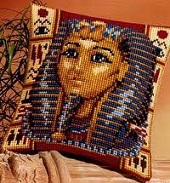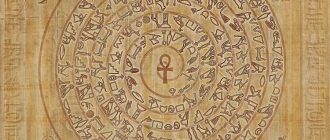Interested in Egyptian Needlework? Discover how the intricate craft of Egyptian needlework has been translated into a celebrated modern day craft…
Egyptian needlework is an intricate creation of embroidery on canvas. Generally yarn or silk threads are woven through canvases in vertical or horizontal stitches creating a design which has holes between the thread and canvas. This embroidery is often hand-painted or printed with a unique design. A well-planned design is worked out before it is transferred onto the canvas and then different types of stitch and thread is utilized to create unique patterns and designs on the canvas.
Differences in Tapestry and Egyptian Needlework
The canvas used in Egyptian needlework is open weave and you can actually see through it because it is a fine mesh. Normally this canvas is very fine and has a high count of 16 or more holes in each one inch line thereby giving it the title of petit point. It is often called tapestry but Egyptian needlework differs from what is real tapestry which is hand woven vertically on a loom and not stitched on a mesh canvas.
Origins of Egyptian Needlework
This Egyptian craft is thousands of years old and was popularized by ancient Egyptians who started to use a tiny slanting stitch to join their tents created out of canvas in ancient times. The person who discovered the tomb of Tutankhamen also chanced upon Egyptian needle work in the cave of the Pharaoh who had been alive approximately 1500 years before the arrival of Jesus Christ.
The needlework that we see today has actually evolved from the similar stitches utilized in creating the tents and was considered a craft for women who were domesticated. You can see how Egyptian needlework has been incorporated into different cultures by seeing the tapestry created on upholstered furniture in the 17th century which required a sturdy base for the artwork to be created on. The ancient American culture also reveals that prayers and blessings for the home were created by young ladies who were required to demonstrate their domesticity and skills along with their literacy levels by stitching out intricate needlework samplers.
Materials Utilized In Creating Needlework
Nowadays you can utilize threads made out of cotton or silk and even combine two varieties and textures to create a unique needlework out of yarn and silk or perhaps cotton thread. These have often been combined with unique fibers like ribbon, metal wire and braids and even in some cases the use of raffia has been noted to create unique needlework. There’s the fancy bargello stitch along with the counted thread stitch, and the tent stitch along with the half cross and continental stitches. A stitch that utilizes wool to create long-lasting and durable needlework is called the basket weave and this helps retain the shape of any rectangle or canvas mesh.
Apart from the threads the mesh canvas has also evolved and changed over time. You can now get open and even weave canvas mesh which have different types of hole sizes that allow heavy threads and needles to pass through without ruining the thread. You can now get a closely woven or even weave canvas mesh which has a per inch capacity of five threads or 24 threads depending on your requirement.





